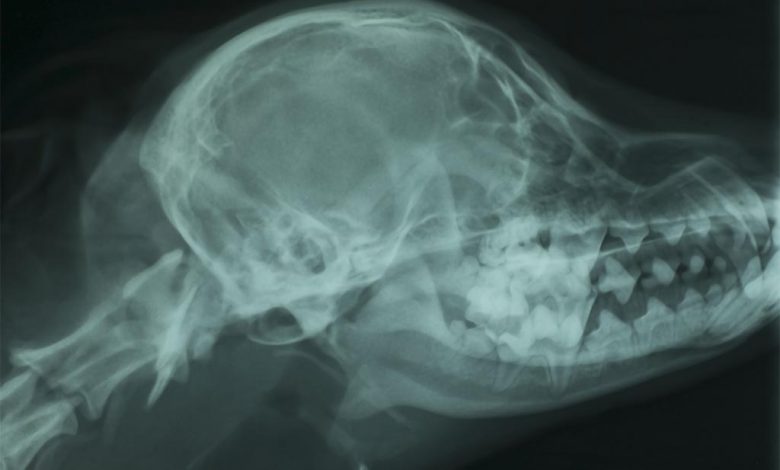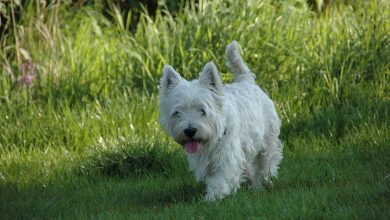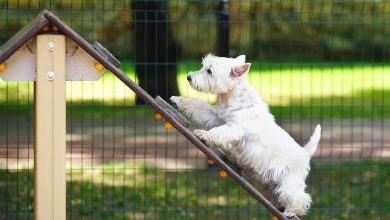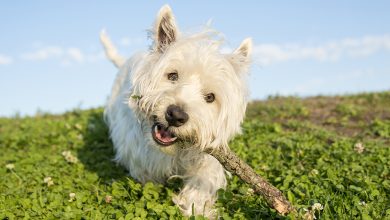Does Your Westie Resemble a Drunken Soldier?
Wobblers, Cervical Spondylomyelopathy, is a disease of the neck that can occur in small dogs.
“As the name suggests, wobblers gives the appearance that the dog is drunk! Sadly, though, unlike us having one too many the night before, the symptoms of wobblers are progressive”.
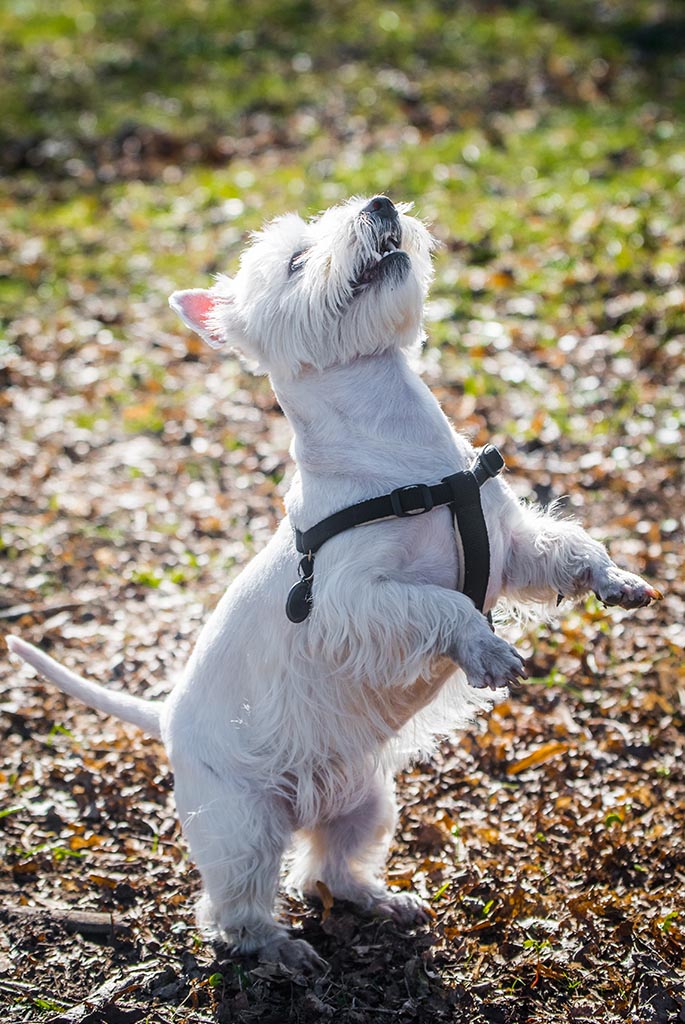
Cervical Spondylomyelopathy, or more commonly known as Wobblers Syndrome/Disease is a disease of the neck, and although it is more commonly seen in large and giant breeds it can also occur in smaller dogs.
As the name suggests, Wobblers gives the appearance that the dog is drunk! Sadly though, unlike us having one too many the night before, the symptoms of Wobblers are progressive.
What is Wobblers?
It is a genetic disease that causes spinal cord compression via a narrowing of the spinal canal (the canal houses the spinal cord) due to instability within vertebral segments. It is thought that Wobblers, whilst genetic, is also contributed to by puppies growing too fast, so it is very important to monitor the diet to prevent rapid growth.
As the spinal canal narrows the spinal cord gets squeezed. The spinal cord gives rise to the nerves that supply the muscles and organs, hence why the dog develops a drunken appearance.
Symptoms usually show up before the age of three years, but symptoms may emerge later in life, these consist of:
- Progressive weakness and uncoordinated gait (ataxia) first seen in the pelvic limbs (hindlimbs) and may progress to the thoracic limbs (forelimbs)
- Loss of muscle mass in the rear legs and over the shoulder blades
- Toenails may become worn due to dragging of the forelimbs
- Lameness or stiffness in the forelimbs
- Neck pain or stiffness
- Partial/complete paralysis
An MRI (magnetic resonance imaging) will be needed to view the specific area and severity of the spinal cord compression. MRI scans show up the soft tissues of the body such as nerves, blood vessels, muscles, and vertebral disc unlike an x-ray.
There are two options depending on the severity of the condition:
Non-surgical:
- Pain management
- Restricting activity for several months, although this runs the risk of muscles weakening further by not being used as much
- Anti-inflammatories to reduce inflammation of the spinal cord and nerve roots
Non ambulatory (unable to walk) dogs should be given soft bedding and turned regularly to prevent bed sores, fluid around the lungs and compression of the heart and lungs from the constant laying position, and bowel and bladder may need to be manually emptied and on a regular schedule.
Manual therapy such as Physiotherapy/Osteopathy/Chiropractic’s may contribute to maintaining muscle mass. Exercises may be given to the owner to do at home to keep the muscles strong, these will be targeted and specific to each case.
Surgical:
Surgery consists of fusing the vertebral segment or segment in the neck that are unstable and causing the compression. After surgery activity restriction MUST be complete and consistent for two to three months to allow a successful fusion.
Around 1-5% of dogs that are treated surgically have significant complications related to surgery and 20% will have a reoccurrence of Wobblers.
Those dogs that are treated medically (non-surgical) will require management for life. The treatment may change as symptoms progress. Sadly, though only roughly 25% that are treated without surgery will remain stable, so progression of symptoms is extremely likely.
Whilst surgery may sound daunting, the outcome is generally pretty good, but it is dependent on a number of factors:
- Type of spinal cord compression
- Number of spinal levels compressed
- The duration of clinical signs prior to diagnosis (the longer the signs, the more damage has been done and therefore less improvement may be seen)
- Weight and age
So, next time you’ve had one too many on a night out and start behaving temporarily like a drunken sailor, spare a thought for those dogs where it is permanent.
Faye Andrews qualified in human Osteopathy in 2002 from the British School of Osteopathy. She then completed a Masters in canine Osteopathy from the European School of Osteopathy in 2018. Faye currently runs her own clinic in Surry alongside teaching both human and canine Osteopathy.


